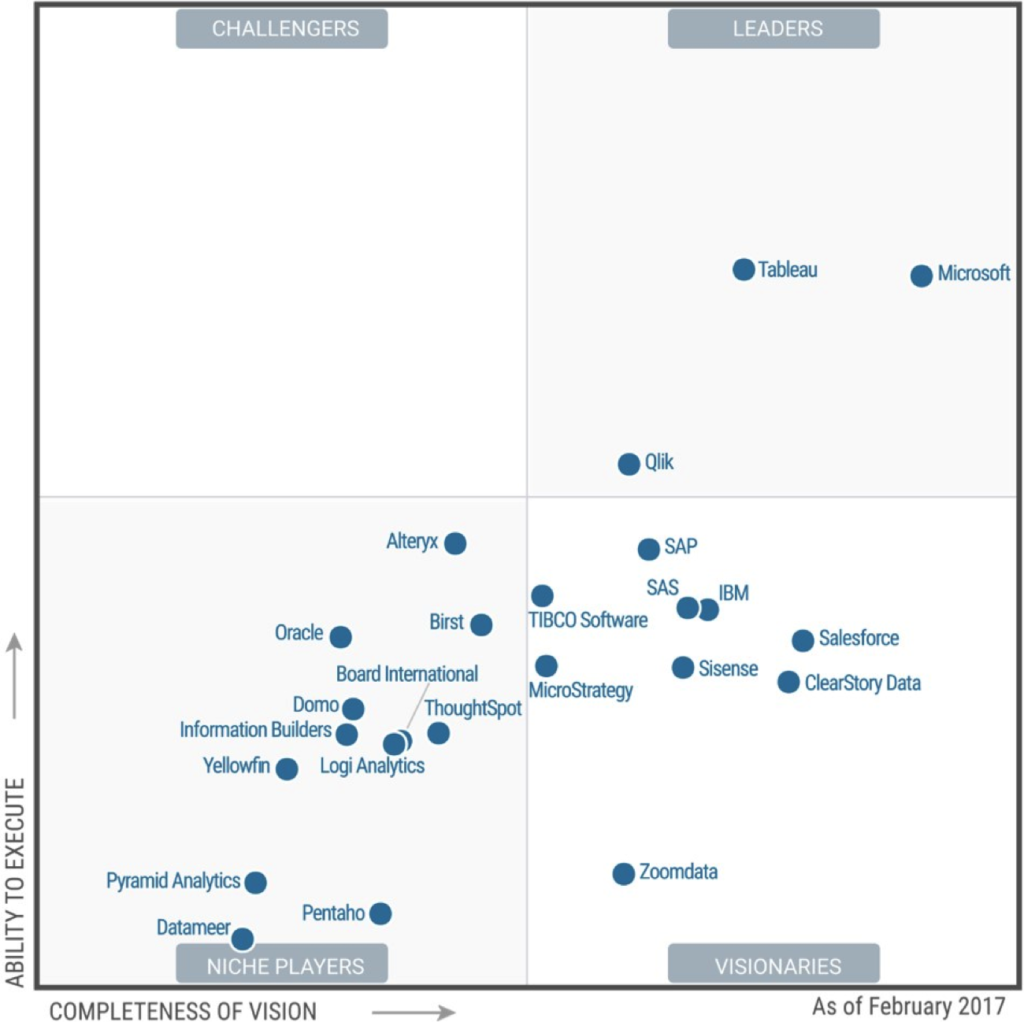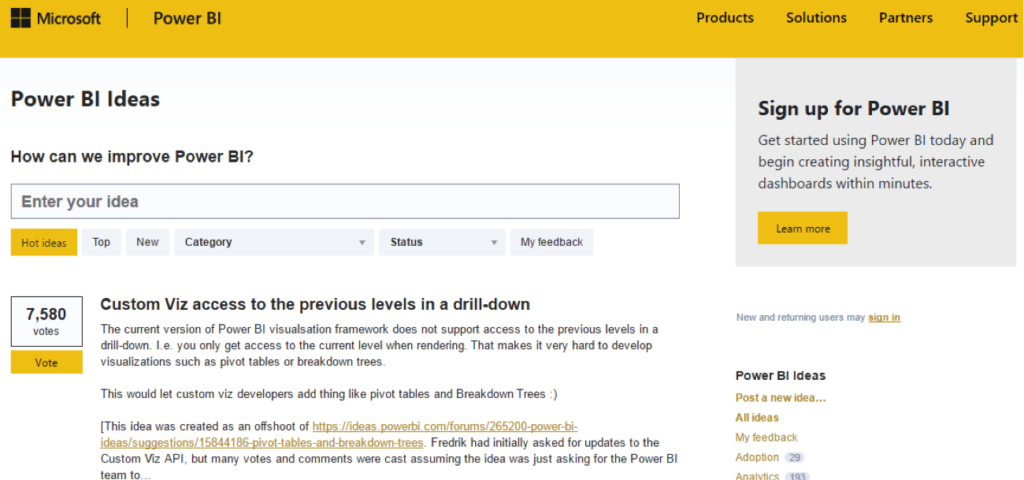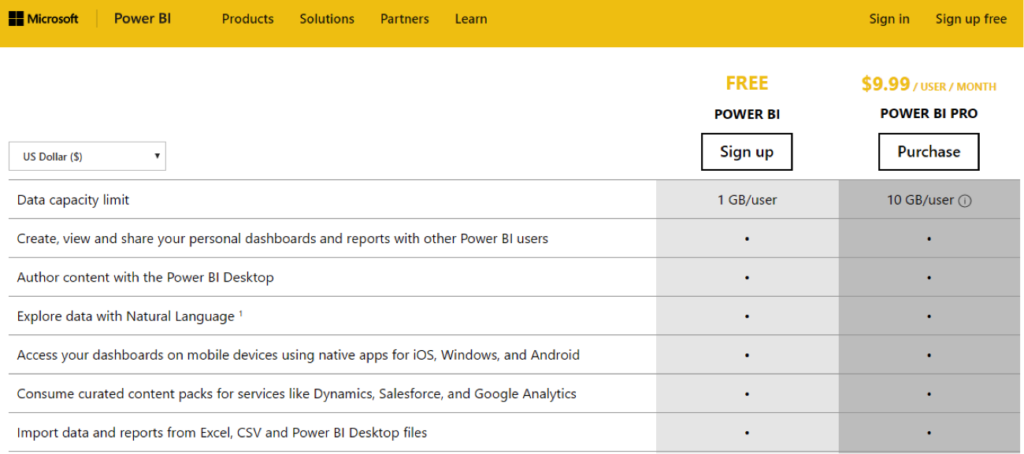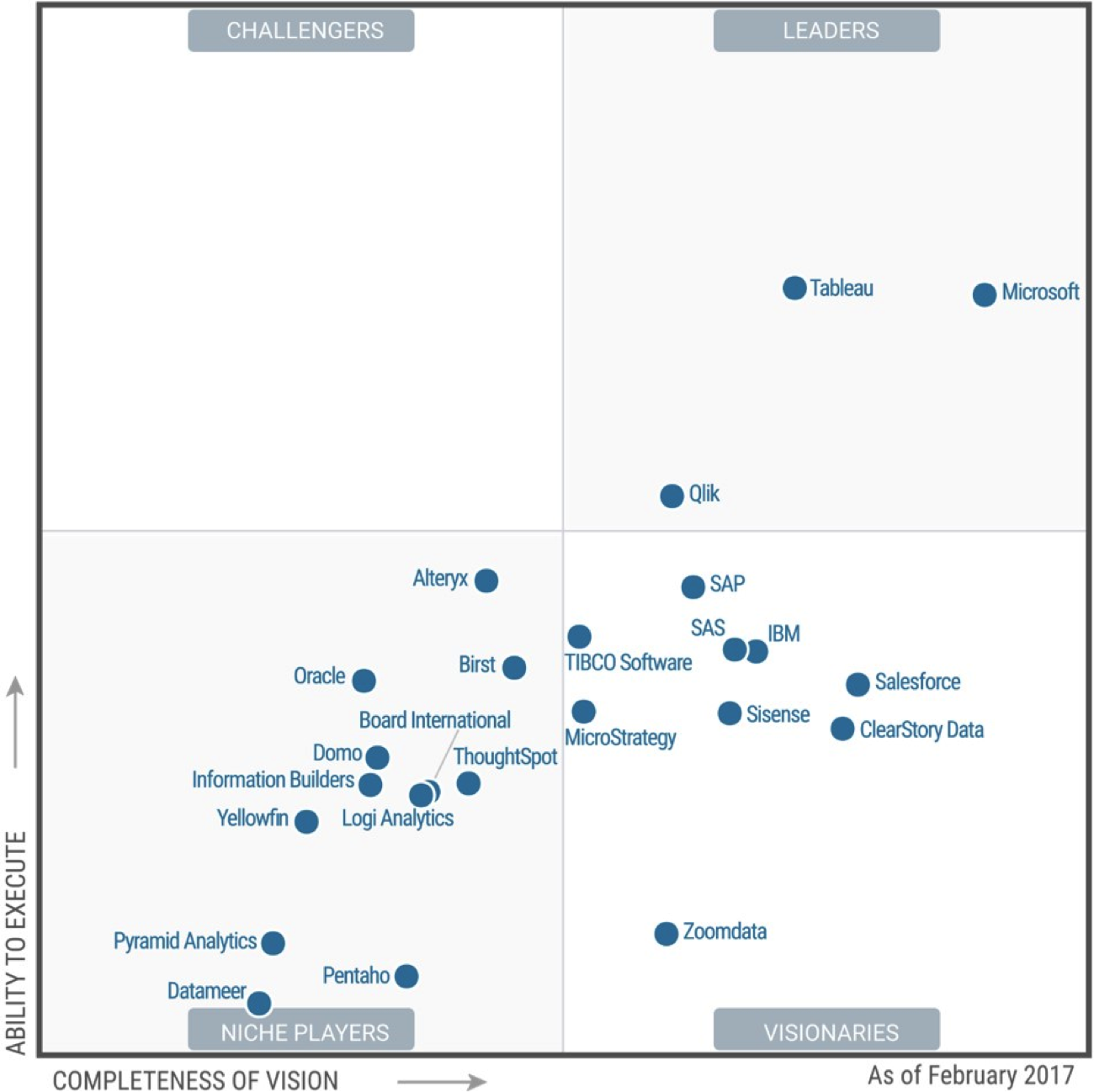Gartner has placed Microsoft at the top of the Business Intelligence and Analytics segment in its Magic Quadrant published February 2017, and we can almost see Microsoft leaping for joy. Gartner’s Magic Quadrant rates companies in terms of their vision, and their ability to execute that vision.

Source: Microsoft
We believe Gartner was spot on with its assessment about Microsoft Power BI. Here is an excerpt from their report last year:
- Microsoft’s cloud-based delivery model and low per-user pricing offers a low TCO — one of the top three reasons why customers selected it, in addition to ease of use for business users and the availability of skilled resources.
- While Microsoft has long offered low per-user pricing, customers are advised to consider the TCO, which includes hardware costs, development and support costs. Previously, Microsoft had a high cost of ownership in its on-premises deployment model (despite low licensing costs), because of the complexity of implementing multiple servers.
- The new Power BI addresses this issue with both a streamlined workflow for content authors and because the hardware and server architecture is in the Microsoft Azure cloud.
Microsoft does have a solid Business Intelligence and Analytics platform built around Power BI and Azure Analysis Services. Since the latter is focused more on infrastructure management, Gartner uses only Power BI to analyze Microsoft’s capabilities in business intelligence and analytics.
“Microsoft Power BI is the focus for this Magic Quadrant and is on its second major release, offering cloud-based BI with a new desktop interface — Power BI Desktop. Microsoft SQL Server Reporting Services and Analysis Services are not included in the Magic Quadrant evaluation, but are covered in our new Market Guide for enterprise-reporting-based platforms.” Gartner, Feb – 2016
Kamal Hathi, GM for Microsoft BI, wrote in a blog post that Microsoft was able to achieve the recognition due to their customer-centric approach, regular development and ship cycles for Power BI. Microsoft also says that the development of Power BI was helped by high-value community feedback from more than 200,000 active participants submitting over 6000 ideas since Power BI’s July 2015 public launch.

When we checked the Power BI forum there were 797 guests and 105 members online. The forum was fairly active, with tens of thousands of posts since going live in 2015. The Power BI ideas forum did have plenty of ideas being discussed, and it is refreshing to see Microsoft working hard to engage its users rather than “talking at them” all the time, like the old Microsoft.

Microsoft Power BI was relaunched as a freemium product in February 2015, offering a free version, while slashing the paid version’s price from $39.55 to $9.99 per user/month. It is possibly one of the cheapest BI products available from large vendors.

Though the recognition part is nice, it’s important to note that this is yet another enterprise segment that Microsoft has its eye on. IBM Watson analytics products might be far more advanced, but Gartner’s impression is that IBM has a fairly advanced vision for this segment, but perhaps not the ability to execute as well as Microsoft.
Why is that important? Because analytics is one of IBM’s biggest strong points. If Microsoft can make an impression on the market despite IBM’s powerful analytics solutions, that’s something to be noticed.
Thanks for reading our work! We invite you to check out our Essentials of Cloud Computing page, which covers the basics of cloud computing, its components, various deployment models, historical, current and forecast data for the cloud computing industry, and even a glossary of cloud computing terms.



